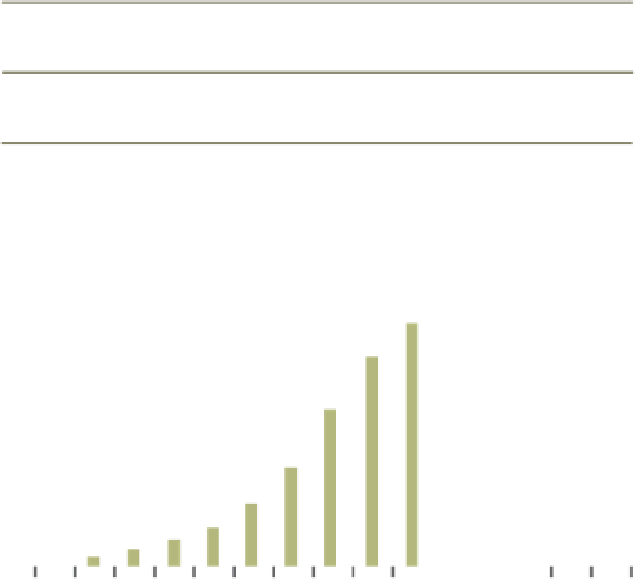Information Technology Reference
In-Depth Information
550
Figure 7.2
Internet Growth: Number of
Internet Domain Names
(Source: Data from “The Internet
Domain Survey,”
www.isc.org.)
500
450
400
350
300
250
200
150
100
50
0
1994
1996
1998
2000
2002
2004
2006
2008
The Internet is truly international in scope, with users on every continent—including
Antarctica. More than 215 million people in the United States (71.4 percent of the popu-
lation) use the Internet. Although the United States has high Internet penetration among its
population, it does not constitute the majority of people online. Of all the people using the
Internet, citizens of Asian countries make up 39 percent, Europeans 26 percent, and North
rates for each country. For example, most Internet usage in South Korea is through high-
speed broadband connections, and over 71 percent of the population is online. In North
Korea, however, Internet use and other civil liberties are restricted by the government. Several
people and organizations are working to provide Internet access to developing countries.
2
More than 1.3 billion people use the Internet around the world, and as Figure 7.2 shows, if
the rate of growth continues, the number of users will surge to more than 2 billion in a
few years.
The ancestor of the Internet was the
ARPANET
, a project started by the U.S. Department
of Defense (DoD) in 1969. The ARPANET was both an experiment in reliable networking
and a means to link DoD and military research contractors, including many universities
doing military-funded research. (
ARPA
stands for the Advanced Research Projects Agency,
the branch of the DoD in charge of awarding grant money. The agency is now known as
DARPA—the added
D
is for
Defense
.) The ARPANET was highly successful, and every
university in the country wanted to use it. This wildfire growth made it difficult to manage
the ARPANET, particularly its large and rapidly growing number of university sites. So, the
ARPANET was broken into two networks: MILNET, which included all military sites, and
a new, smaller ARPANET, which included all the nonmilitary sites. The two networks
ARPANET
A project started by the U.S. Depart-
ment of Defense (DoD) in 1969 as
both an experiment in reliable net-
working and a means to link DoD
and military research contractors,
including many universities doing
military-funded research.









